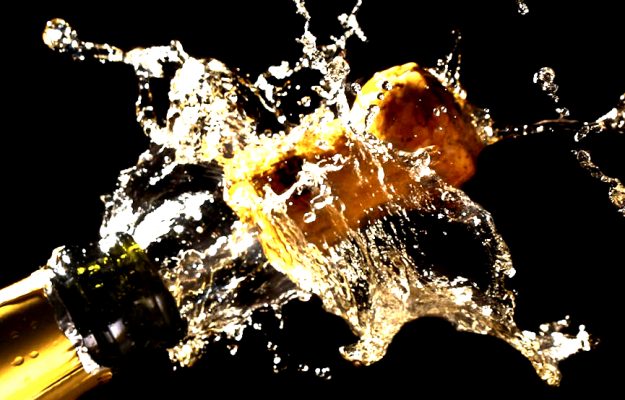The growth of Italian sparkling wine does not stop, which closes 2019 with another positive figure for foreign demand, which, for the first time, exceeded 4 million hectolitres (+8%), compared to +5% of the corresponding incomes. Domestic consumption was also good, +6% overall and production grew proportionally to exceed 760 million bottles, of which two-thirds are going abroad, for an estimated value of 3.3 billion euros, as the data processed by Ismea show. Analyzing exports, even in a positive context for 2019, there is a substantial slowdown in the Italian sparkling wine market, which, for years, had recorded double-digit increases. Another aspect to underline is that, although the entire sparkling wine sector has grown, foreign demand is essentially driven by Prosecco: an excessive dependence on a single product that many perceive as a weakness in the system. Prosecco, 65% of all sparkling wine exports by volume, grew by 21% compared to -10% of Asti, accompanied by a significant reduction in other PDO sparkling wines.
In terms of destinations, there has been a marked increase (+14%) in shipments of sparkling wine to the United States, accompanied by a less than proportional, but still double-digit (+12%) growth in income. In the United Kingdom, on the other hand, a 10% reduction in fees was added to the substantial stability of volumes. A decisive decline in Germany, the third destination of Italian bubbles (-4.2% in value). A curious figure is that of France, where 28% more sparkling wine was shipped (+25.5% in value), almost for the entire Prosecco, which alone represents over 80% of all Italian sparkling wine exports to the transalpine country. Significant is the results in Canada (+10.9% in value), Japan (+23% in value), Russia (+21.7% in value) and China (+23.7% in value) were also significant. In Scandinavia, opposite trends were recorded: exports of sparkling wine to Sweden grew (+10%), Norway was stable, while Denmark (-19%) and Finland suffered a setback. On the whole, the Italian sparkling wine export market, while counting on a list of over 170 countries, remains quite concentrated: the first three destinations absorb almost 60% of the total both in volume and value.
Domestic consumption of sparkling wine in 2019 also rose compared to the year before. Limited to sales within the formats in large-scale distribution according to Ismea/Nielsen, for example, sales grew by 8% compared to +6% in value, while the wine sector as a whole grew by 1% in volume and 3% in value. This result, in terms of quantity, however, is the combination of a 14% increase in the segment of wines obtained with the non-sweet Charmat method, of which the world of Prosecco is part, and -5% attributable to sweet sparkling wines to which Asti belongs. Champagne also fell slightly (-3%), while Italian classic method wines gained 2% while maintaining a limited market share of 8%.
Meanwhile, the production of Italian sparkling wines is estimated at 5.7 million hectolitres, which translates into over 760 million bottles (+8%). The higher production also compensated for the lower import of sparkling wines (-14%). Prosecco Doc plays a decisive role in terms of production with more than half the total volume. If we add Conegliano Valdobbiadene and Colli Asolani, it is clear that the “Prosecco system” is decisive for Italian sparkling wine production. Asti is losing volume and market share, while sparkling wines produced with the classic method, Franciacorta in the lead, which has reached almost 130,000 hectoliters, and Trentodoc, with almost 80,000 hectoliters, are also becoming increasingly popular. In the general success of Italian sparkling wines, the remarkable dynamism of what can be defined as the minor types, that is sparkling wines produced in denominations other than the main or varietal ones, is confirmed also in 2019. The Italian offer of sparkling wines is very rich and widespread in all regions. The Italian specifications include 153 Doc sparkling wines, 18 Docg sparkling wines, and 17 IGT sparkling wines. To these can be added the 24 authorized varietal sparkling wines and the various quality sparkling wines provided for by the regulations. This confirms a framework in which the growing interest of the public for sparkling wines will offer stimulating opportunities for diversification even in areas not specialized in these products.
Precisely concerning the fact that the production of sparkling wines concentrates volumes on a few denominations, Ismea systematically monitors only the most significant ones in terms of volumes. The year 2019 also saw a flexible market in terms of prices for sparkling wines. The abundant production in 2018 significantly reduced the increases of the previous year. Compared to a 10% drop in production prices for Doc and Docg wines, those for sparkling wines recorded very different results precisely because each denomination tends to have a market of its own. A similar situation in the first months of 2020. Considering, in fact, only the January and February 2020 price lists, we can see a repositioning downwards of the Prosecco price lists, because the product is still abundant this year: in the first two months of 2020 prices at 204 euros per hectolitre for the Docg (-15%) and 160 euros per hectolitre for the Doc (-9.3%). Stable Asti (170 euro per hectolitre) and Franciacorta (352 euro per hectolitre), while for Trentodoc there is a slight upward shift (+4.3% at 245 euro per hectoliter).
Copyright © 2000/2025
Contatti: info@winenews.it
Seguici anche su Twitter: @WineNewsIt
Seguici anche su Facebook: @winenewsit
Questo articolo è tratto dall'archivio di WineNews - Tutti i diritti riservati - Copyright © 2000/2025








































































































































































































